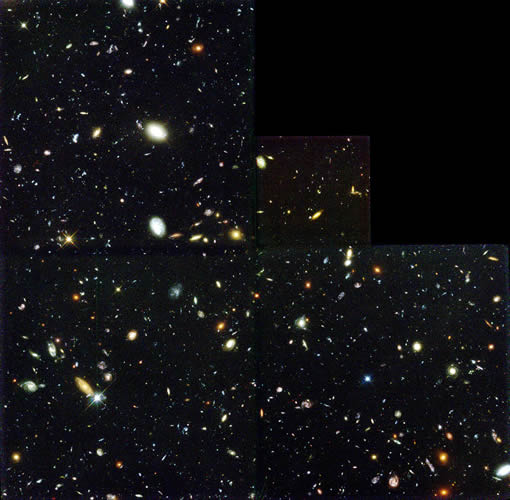Hubble Deep Field
16.8 - Understand the major observational evidence in favour of the Big Bang theory:c) Hubble Deep Field image
Edwin Hubble only has the Hubble Law, Hubble Constant, Hubble Tuning Fork and Hubble Space Telescope named after him. Scientists thought it would be an original idea to name something else after him and came up with the Hubble Deep Field. Not really, but it is named after the Hubble Space Telescope and is a fitting tribute to the telescope and Hubble's work.
For ten days in 1995 the Hubble telescope took long exposure images of a tiny area of space in Ursa Major, 2.6 arcminutes in size, the equivalent to a tennis ball at a distance of 100 metres. The area was chosen for its lack of any dim stars. The 342 images were combined and in this one area were found 3,000 separate galaxies.
The Hubble Deep Field impressed the scientific community by providing supporting evidence of the early universe after the Big Bang and valuable information such as:
- A high number of galaxies with higher redshifts (meaning they are receding at a fast rate) than predicted
- A high number of disturbed and irregular galaxies showing collisions occurred frequently in the younger universe.
- More knowledge about the rate of galaxy and star formation over the age of the universe.
The experiment has been conducted several times since. Find out about the Hubble Ultra-Deep Field. Go on, you'll love it.

 | © All Rights Reserved |
| © All Rights Reserved |